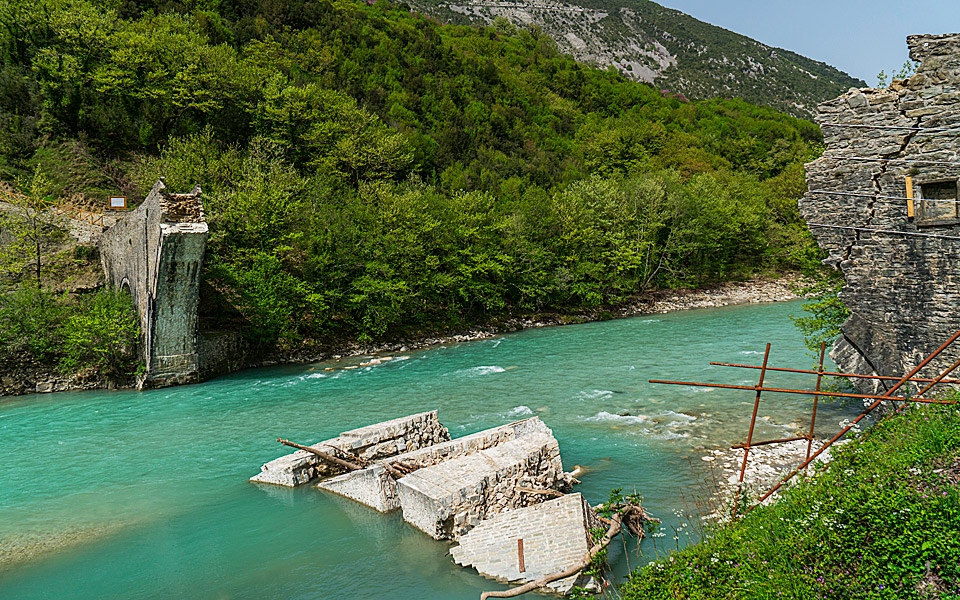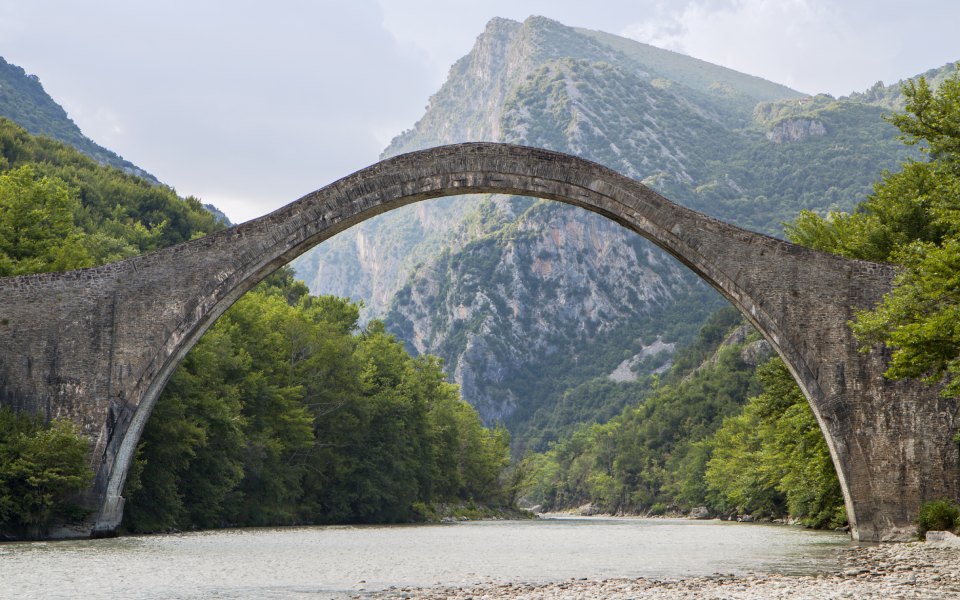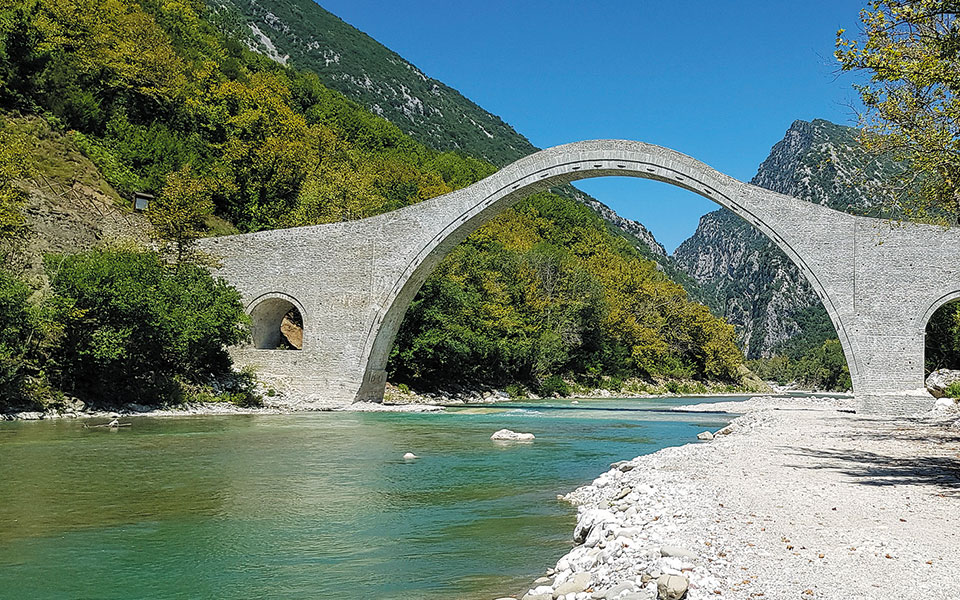“We did nothing. The real miracle was done a century and a half ago by Bekas, working with the tools he had at the time,” says Giorgos Smyris, associate professor of the Department of Architectural Engineering of the University of Ioannina, looking at the restored Plaka Bridge with a smile.
In 1866, when this great stone bridge connecting the two banks of Arachthos was built, Kostas Bekas was the master builder in charge. A few years later, as Greece grew in size, this spot came to mark the border between Greece and the Ottoman Empire, and a customs house to serve that border was built here, too. Smyris undertook the rebuilding of the bridge after its collapse in February 2015.
“What we did was the completion of all the preliminary work, [rebuilding] the entire foundational section located in the river, before the contractor took over the rest,” says Smyris, who followed the progress of the project from the beginning until its end. “A key part, in order to restore the bridge in the exact same form, was the study of the old construction. We used everything that was available: old photographs, historical sources, personal testimonies and, above all, the information we gleaned from the broken pieces that we pulled from the river. In the process, we made some very interesting discoveries, such as the fact that the bridge piers were reinforced with iron sulfide frames that were, as it turned out, imported from Britain.”

© Perikles Merakos
Some of the fragments even found a place in the new bridge. “As you might imagine, the force of the floodwaters was such that some stones from the demolished bridge were washed as far down as Arta. However, we managed to save a number of them and about 30 percent of the original material was reused. The rest comes from a quarry outside Ioannina – obviously, it wasn’t possible to open a quarry here in the forest – with the same mineralogical composition and quality.”
Even with today’s technology, however, the challenges of such a project were daunting. “Although the work was done mainly during the summer months over three years, we woke up every day and looked to the sky anxiously. A sudden downpour or a small tremor could have destroyed all the work at that stage. The really difficult thing is the battle with the water, and how to manage to temporarily seal a piece to set up the bases, because the river never stops and, sooner or later, it ruins everything you do.”

© Shutterstock
35,000 Stones
After restoring the foundation, it was time to build the bridge. Stone by stone, the 35,000 stones that now make up the bridge were moved into place, as close as possible to where the original stones had been. The carving of building stones, however, differ from craftsman to craftsman; there is a signature of sorts that shows the “hand of the mason,” says Costas Pliakopanos, an experienced stonemason from the neighboring village of Monolithi who has been present throughout the restoration.
“There are still those who deal with stone in our parts. Of course, we are not ‘kiouprolides,’ or ‘bridge builders,’ but someone who knows stone masonry picks up what needs to be done very quickly.” Apart from the Greeks involved, craftsmen from Albania, Pakistan, Afghanistan and other parts of the world worked on the Plaka Bridge, too. “At least as far as the Balkans goes, we know that the craftsmen survived because industrial building methods did not prevail everywhere, and there were jobs. Here in Plaka, we had twenty stonemasons and each one made from five to fifteen stones a day,” adds Pliakopanos.
At this point, Smyris interjects, giving an engineer’s point of view: “Not all stones are the same. Some, like those for the bow of the arch, are 80 cm in length and require many hours of carving to be perfected. We traditionally talk about a ‘key,’ the stone that secures the whole construction, but in reality this bridge has nine ‘keys,’ and all of them must be placed and fitted perfectly on the same day, so that it comes together properly as the mortar sets. The whole game comes down to the right balance between principles of statics and aesthetics.”
This article was previously published in Greek at kathimerini.gr.












